3.1: Decode My Nutrition Label
- Page ID
- 2414
\( \newcommand{\vecs}[1]{\overset { \scriptstyle \rightharpoonup} {\mathbf{#1}} } \)
\( \newcommand{\vecd}[1]{\overset{-\!-\!\rightharpoonup}{\vphantom{a}\smash {#1}}} \)
\( \newcommand{\id}{\mathrm{id}}\) \( \newcommand{\Span}{\mathrm{span}}\)
( \newcommand{\kernel}{\mathrm{null}\,}\) \( \newcommand{\range}{\mathrm{range}\,}\)
\( \newcommand{\RealPart}{\mathrm{Re}}\) \( \newcommand{\ImaginaryPart}{\mathrm{Im}}\)
\( \newcommand{\Argument}{\mathrm{Arg}}\) \( \newcommand{\norm}[1]{\| #1 \|}\)
\( \newcommand{\inner}[2]{\langle #1, #2 \rangle}\)
\( \newcommand{\Span}{\mathrm{span}}\)
\( \newcommand{\id}{\mathrm{id}}\)
\( \newcommand{\Span}{\mathrm{span}}\)
\( \newcommand{\kernel}{\mathrm{null}\,}\)
\( \newcommand{\range}{\mathrm{range}\,}\)
\( \newcommand{\RealPart}{\mathrm{Re}}\)
\( \newcommand{\ImaginaryPart}{\mathrm{Im}}\)
\( \newcommand{\Argument}{\mathrm{Arg}}\)
\( \newcommand{\norm}[1]{\| #1 \|}\)
\( \newcommand{\inner}[2]{\langle #1, #2 \rangle}\)
\( \newcommand{\Span}{\mathrm{span}}\) \( \newcommand{\AA}{\unicode[.8,0]{x212B}}\)
\( \newcommand{\vectorA}[1]{\vec{#1}} % arrow\)
\( \newcommand{\vectorAt}[1]{\vec{\text{#1}}} % arrow\)
\( \newcommand{\vectorB}[1]{\overset { \scriptstyle \rightharpoonup} {\mathbf{#1}} } \)
\( \newcommand{\vectorC}[1]{\textbf{#1}} \)
\( \newcommand{\vectorD}[1]{\overrightarrow{#1}} \)
\( \newcommand{\vectorDt}[1]{\overrightarrow{\text{#1}}} \)
\( \newcommand{\vectE}[1]{\overset{-\!-\!\rightharpoonup}{\vphantom{a}\smash{\mathbf {#1}}}} \)
\( \newcommand{\vecs}[1]{\overset { \scriptstyle \rightharpoonup} {\mathbf{#1}} } \)
\( \newcommand{\vecd}[1]{\overset{-\!-\!\rightharpoonup}{\vphantom{a}\smash {#1}}} \)
\(\newcommand{\avec}{\mathbf a}\) \(\newcommand{\bvec}{\mathbf b}\) \(\newcommand{\cvec}{\mathbf c}\) \(\newcommand{\dvec}{\mathbf d}\) \(\newcommand{\dtil}{\widetilde{\mathbf d}}\) \(\newcommand{\evec}{\mathbf e}\) \(\newcommand{\fvec}{\mathbf f}\) \(\newcommand{\nvec}{\mathbf n}\) \(\newcommand{\pvec}{\mathbf p}\) \(\newcommand{\qvec}{\mathbf q}\) \(\newcommand{\svec}{\mathbf s}\) \(\newcommand{\tvec}{\mathbf t}\) \(\newcommand{\uvec}{\mathbf u}\) \(\newcommand{\vvec}{\mathbf v}\) \(\newcommand{\wvec}{\mathbf w}\) \(\newcommand{\xvec}{\mathbf x}\) \(\newcommand{\yvec}{\mathbf y}\) \(\newcommand{\zvec}{\mathbf z}\) \(\newcommand{\rvec}{\mathbf r}\) \(\newcommand{\mvec}{\mathbf m}\) \(\newcommand{\zerovec}{\mathbf 0}\) \(\newcommand{\onevec}{\mathbf 1}\) \(\newcommand{\real}{\mathbb R}\) \(\newcommand{\twovec}[2]{\left[\begin{array}{r}#1 \\ #2 \end{array}\right]}\) \(\newcommand{\ctwovec}[2]{\left[\begin{array}{c}#1 \\ #2 \end{array}\right]}\) \(\newcommand{\threevec}[3]{\left[\begin{array}{r}#1 \\ #2 \\ #3 \end{array}\right]}\) \(\newcommand{\cthreevec}[3]{\left[\begin{array}{c}#1 \\ #2 \\ #3 \end{array}\right]}\) \(\newcommand{\fourvec}[4]{\left[\begin{array}{r}#1 \\ #2 \\ #3 \\ #4 \end{array}\right]}\) \(\newcommand{\cfourvec}[4]{\left[\begin{array}{c}#1 \\ #2 \\ #3 \\ #4 \end{array}\right]}\) \(\newcommand{\fivevec}[5]{\left[\begin{array}{r}#1 \\ #2 \\ #3 \\ #4 \\ #5 \\ \end{array}\right]}\) \(\newcommand{\cfivevec}[5]{\left[\begin{array}{c}#1 \\ #2 \\ #3 \\ #4 \\ #5 \\ \end{array}\right]}\) \(\newcommand{\mattwo}[4]{\left[\begin{array}{rr}#1 \amp #2 \\ #3 \amp #4 \\ \end{array}\right]}\) \(\newcommand{\laspan}[1]{\text{Span}\{#1\}}\) \(\newcommand{\bcal}{\cal B}\) \(\newcommand{\ccal}{\cal C}\) \(\newcommand{\scal}{\cal S}\) \(\newcommand{\wcal}{\cal W}\) \(\newcommand{\ecal}{\cal E}\) \(\newcommand{\coords}[2]{\left\{#1\right\}_{#2}}\) \(\newcommand{\gray}[1]{\color{gray}{#1}}\) \(\newcommand{\lgray}[1]{\color{lightgray}{#1}}\) \(\newcommand{\rank}{\operatorname{rank}}\) \(\newcommand{\row}{\text{Row}}\) \(\newcommand{\col}{\text{Col}}\) \(\renewcommand{\row}{\text{Row}}\) \(\newcommand{\nul}{\text{Nul}}\) \(\newcommand{\var}{\text{Var}}\) \(\newcommand{\corr}{\text{corr}}\) \(\newcommand{\len}[1]{\left|#1\right|}\) \(\newcommand{\bbar}{\overline{\bvec}}\) \(\newcommand{\bhat}{\widehat{\bvec}}\) \(\newcommand{\bperp}{\bvec^\perp}\) \(\newcommand{\xhat}{\widehat{\xvec}}\) \(\newcommand{\vhat}{\widehat{\vvec}}\) \(\newcommand{\uhat}{\widehat{\uvec}}\) \(\newcommand{\what}{\widehat{\wvec}}\) \(\newcommand{\Sighat}{\widehat{\Sigma}}\) \(\newcommand{\lt}{<}\) \(\newcommand{\gt}{>}\) \(\newcommand{\amp}{&}\) \(\definecolor{fillinmathshade}{gray}{0.9}\)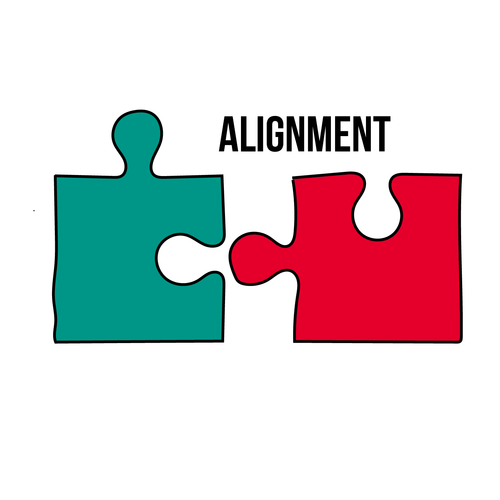
National Health Education Standards (NHES)
- 1.12.5 Propose ways, such as reading a nutrition label, to reduce or prevent health injuries.
- 7.12.2 Demonstrate a variety of healthy practices and behaviors, such as reading a nutrition label, that will maintain or improve the health of self and others.
Wellness Guidelines
- Decrease fast food consumption

- Instruction: In a group or think-pair-share format, have participants discuss the following questions. Acknowledge those who have progressed toward their goal(s) and encourage anyone who wants to change or modify their goal to get 1:1 support.
- Share: Let’s discuss our SMART Goals.
- How is it going with your current SMART goal?
- What are some ways you can improve progress towards your goal? (Grows)
- What are some ways you are doing well with progress towards your goal? (Glows)
GUIDELINE: Decrease Fast Food Consumption
- Share: What guideline do you think is related to today’s lesson? Who has a SMART Goal related to this guideline?
- Instruction: Select one activity.
- Guideline Popcorn: The group lists all 8 guidelines rapidly in popcorn format.
- Guideline Charades: Divide participants into groups and assign each a guideline. Each group has to silently act out the guideline for the rest to guess.
- Two Truths and One Lie:
- Truth 1: A 30 oz. sweet tea has as much sugar in it as two candy bars.
- Truth 2: A large order of fries is one of the unhealthiest snacks. They have nearly 1,500 calories and 71 grams of fat.
- Lie: Fast food is a lot cheaper than groceries. The average fast food meal is around $7, which is fine for one person, but for a family of four? That will cost about $28. Did you know that you can feed the same family of four an entire chicken and vegetables from a grocery store for half the cost?
- Questions to discuss and/or journal:
- How often do you eat fast/junk food? What do you usually eat? Where?
- Why do people eat junk food and fast food on a consistent basis?
- What are choices you can make to eat healthier options at fast food restaurants?
- What could be some healthier snacks you can choose?

- How to read the nutrition label to help you make healthier food choices.
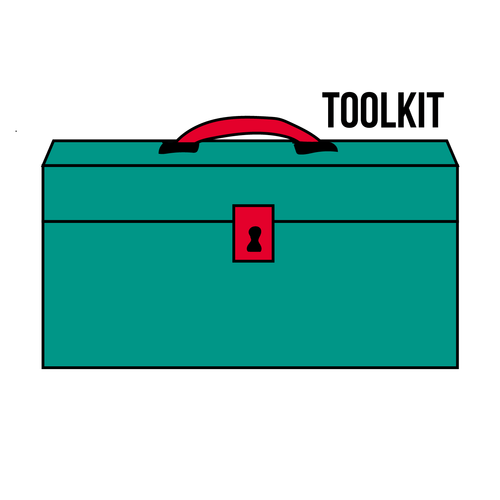
- Worksheets
- Slide presentation
- Fruit and fruit-flavored food item or picture of fruit and fruit-flavored food item
- Extra-large nutrition label: presented as a slide, laminated poster, or drawn on a board
- Image of older vs. newer nutrition labels: presented as a slide, laminated poster, or drawn on a board
- 18 blank cards (6x9 or larger)
- 8 food items: either packages or printouts of labels with pictures
- Paper
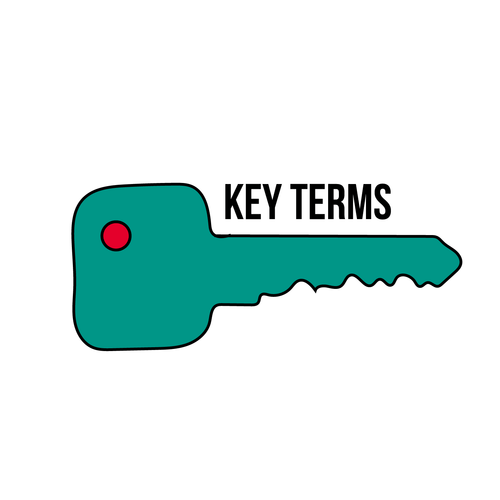
[As defined by Merriam-Webster, n.d.; USDA & HHS, 2015; Kirkpatrick, 2015; Zeratsky, 2016; Tremblay, n.d.]
- Nutrition: The supply of food to cells and an organism that is necessary to support life; the process of eating the right kinds of food so you can be healthy and grow properly.
- Serving Size: A standardized amount of a food, such as a cup or an ounce, that can help you calculate the calories and nutrients in that food.
- Calorie: A unit commonly used to measure the energy content of foods and beverages as well as energy use by the body.
- Cholesterol: A substance found in animal sources. Cholesterol serves as building blocks for certain hormones and other substances your body needs.
- Sodium: Commonly consumed as salt (sodium chloride) and is vital for healthy nerves and muscles in small quantities.
- Fiber: Non-digestible carbohydrate found naturally in plants that help fill you up and go to the bathroom regularly.
- Sugar: A simple carbohydrate found naturally in foods such as lactose in milk or fructose in fruit.
- Added Sugar: Syrups and other caloric sweeteners used as a sweetener in other food products. Naturally occurring sugars such as those in fruit or milk are not added sugars.
- Vitamins/Minerals: Comes from plants and animals and are important to boost our immune system.
- Daily Value: This indicator that shows the percentage of a certain nutrient in a food, based on a 2,000-calorie diet.
- Ingredient List: The list of ingredients a particular food or drink contains in order by weight (greatest to least).
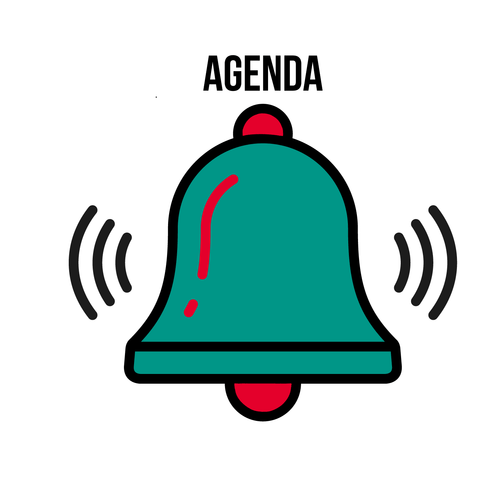
- Do Now
- Why Do Foods Have Labels?
- Decoding the Nutrition Label
- Scavenger Hunt
- Exit Ticket
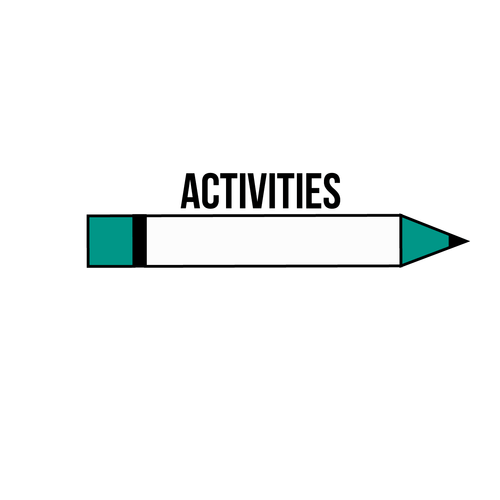
Do Now:
- Instruction:
- Have participants answer the following question on their worksheet or by sharing out loud.
- Pretend you just won the lottery. What would you do with all that money?
- Have participants answer the following question on their worksheet or by sharing out loud.
- Share:
- Even if we bought a lottery ticket every day for the rest of our lives, we still have no control over whether or not our number is chosen as the winner. Although we do not have control over everything in our lives, we do have some control over our health. Forming healthy habits today helps us maintain those habits moving forward.
Good to Know: Why Do Foods Have Labels?
- Share:
- What does nutrition mean? It is the supply of food to cells and an organism that is necessary to support life.
- Certain foods are a better source of energy and nutrients than others.
- How can we know which foods will give our bodies the best fuel? By reading the nutrition label.
- If you were blindfolded and asked to eat something, would you do it? I bet most of you wouldn’t. That’s why it’s important to read the nutritional label – to know what you are eating.
- Instruction:
- Hold up a piece of fruit and a label from a fruit-flavored food item. For example, a strawberry and strawberry ice cream, an apple and apple-flavored cereal, a blueberry and blueberry breakfast tart, a tomato and ketchup, etc.
- Adaptation: present a photo of a fruit and a label.
- Share:
- Why do some foods have labels while others do not?
- Whole foods, like fruits and veggies, do not need nutrition labels because there is only one ingredient in that food since it’s in its natural state.
- For example, what are the ingredients in an apple? An apple! Other foods have labels for two reasons: 1) they are packaged or 2) they are processed or altered from their natural state.
- Can anyone else name some examples of whole foods?
- Broccoli
- Cabbage
- Lettuce
- Banana
- Orange
- Egg
- Unprocessed pork meat
- Salmon
Hands-On: Decoding the Nutrition Label
- Share:
- How many of you read nutrition labels?
- It can look complicated, but let’s break it down into smaller parts to understand the whole.
- Instruction:
- Prepare an extra-large nutrition label similar to the one shown below.
- Guide the group to better understand how these components affect their overall health. Use the terms below to break down your label:
- “Start here” next to Serving Size.
- “Check calories” next to Calories.
- “Limit these nutrients” as a red box around Trans Fat, Cholesterol, and Sodium. Ask participants: Should % Daily Value be lower or higher? (Lower)
- “Get enough of these nutrients” as a green box around fiber, vitamins, and minerals. Ask participants: Should % Daily Value be lower or higher? Higher
- “5% or less is low and 20% or more is high” next to the % Daily Value.
- “Greatest to least” next to Ingredient list.
- Note: Fat, Carbohydrates, and Protein are macronutrients that are explained in the lesson “Mighty Macronutrients”.
 Image from: https://health.gov/dietaryguidelines...elines2010.pdf
Image from: https://health.gov/dietaryguidelines...elines2010.pdf- Instruction:
-
- Display the image of the older vs. newer nutrition labels in the presentation or on the projector or board. As participants make note of the changes, point out where the changes can be found on the new nutrition label.
- Share:
- In 2016, the FDA announced a new nutrition label for packaged foods in hopes of making it easier for you to make more informed choices about your food.
- Rolling out this new label is a gradual and ongoing process, but you will be seeing more and more of it. By 2020, most food companies will be required to use the new nutrition label.
- What are some differences between the older and newer nutrition labels? And why do you think that change was made?
- Serving size information is bolded, larger font
- Easier to see this information (brings more attention to it)
- Serving sizes have been updated to reflect what people actually eat and drink today
- What’s considered a single serving has changed since the original label was created, so this information needs to be updated to reflect how much people usually eat so that it is easier for them to apply the nutrition information.
- Some serving sizes will increase and others will decrease because, by law, the serving sizes must be based on the amounts of food and drink that people typically consume, not on how much they should consume.
- Calories are in a larger font
-
- Easier to see this information (brings more attention to it)
- Removed “calories from fat”
- Research shows that the type of fat consumed is more important than the amount
- New “added sugars” section (in grams and percent daily value)
- To help people become more aware of how much-added sugars they’re consuming (supports the reduction of caloric intake from added sugars)
- Daily values for nutrients like sodium, dietary fiber, and vitamin D are being updated
- Based on newer research
- The list of nutrients that are required or permitted to be declared is being updated (Vitamin D and potassium will be required on the label and Vitamin A and C will no longer be required)
- Vitamin D and potassium are now required on the label because Americans do not always get the recommended amounts
- Vitamins A and C are no longer required since deficiencies of these vitamins are rare today
- Actual amounts of certain vitamins/minerals (in g or mg) included (instead of just percent daily value)
- To make it easier to understand how much of the nutrients they are getting to see if they’re getting enough
- New footnote
- To better explain what percent daily value means (FDA, 2018)
- Serving size information is bolded, larger font
 Image from: https://www.fda.gov/Food/GuidanceReg.../ucm385663.htm
Image from: https://www.fda.gov/Food/GuidanceReg.../ucm385663.htm Image from: https://www.fda.gov/Food/GuidanceReg.../ucm385663.htm
Image from: https://www.fda.gov/Food/GuidanceReg.../ucm385663.htm- Set Up:
- Write or print on 18 cards/pieces of construction paper for a matching activity.
- Each card/piece of paper should have an identifier on one side (1a, 1b, 2a, 2b, etc.) and a term or definition on the other.
- Prepare your cards/pieces of paper according to the chart below, and divide the 18 cards into two packs (a) terms and (b) definitions.
- Set Up:
- Pass these cards out or stick them below participants’ chairs prior to class or during the Do Now. The participants who receive the cards/pieces of paper will be the ones responsible for reading it and matching it during the activity.
|
1a Serving Size |
1b - A standardized amount of a food, such as a cup or an ounce, that can help you calculate the calories and nutrients in that food. Often, the serving size may be smaller than the entire package. For example, for most breakfast cereals, the ¾ cup is considered one serving. Would you eat more than that amount for breakfast? Optional Instruction: show the visual of ¾ cup cereal (FDA, 2016). |
|
2a Calorie |
2b - A unit of (heat) energy we get from the food that sustains the body’s functions such as moving, breathing, sleeping. They give your body energy like gasoline gives energy to a car. How many calories a person needs depends on their age, gender, height, weight, and activity level, but the average person needs 2,000 calories. See Resources for the table. |
|
3a Cholesterol |
3b - Vital for building hormones and cell membranes, but our body makes most of the cholesterol it needs. It’s found in animal sources, including meat, seafood, poultry, eggs, and dairy products. |
|
4a Sodium |
4b - Commonly consumed as salt (sodium chloride) and is vital for healthy nerves and muscles, but in small quantities. |
|
5a Fiber |
5b - Non-digestible carbohydrate found naturally plants that help fill you up and go to the bathroom regularly. Examples include whole grains, beans, fruits, vegetables, nuts, and seeds. |
|
6a Sugar |
6b – A simple carbohydrate found naturally in foods such as lactose in milk or fructose in fruit. “Sugar” on the nutrition label is the total sugar including natural and added sugar. If a product does not include milk or fruit (lactose or fructose) then you can assume the amount listed is added sugars (USDA & HSS, 2010). Added sugar: Caloric sweeteners that are added to foods during processing, preparation, or consumed separately. Examples include table sugar added to coffee and high fructose corn syrup in sugar-sweetened beverages. |
|
7a Vitamins & Minerals |
7b - Comes from plants and animals and are important to boost our immune system. Examples include potassium, calcium, and Vitamins A, C, D, E, K, and B. |
|
8a Daily Value |
8b - This indicator shows the percentage of a certain nutrient in a food, based on a 2,000-calorie diet; 5% or less may be considered low for a particular nutrient, 10% to 19% is good, and 20% or more is high (Gavin, 2014). |
|
9a Ingredients |
9b - The list of what the food or drink contains that are listed in the order of weight. The ingredient with the most weight is listed first and the ingredient with the least weight is listed last. When reviewing the ingredient list, look for words like “whole” next to grains and look out for words that end in “–ose” which is a type of sugar. The fewer ingredients a food has, the less processed. If you don’t recognize the words, they may be processed ingredients which is better to avoid. |
- Share:
- Now that we have reviewed the different sections of the nutrition label, let’s match the definitions with each component.
- Instruction:
- Call on participants and ask them to read their word or definition aloud.
- As the different components are shared, point them out on your nutrition label and have the group match the component and the definition on their worksheets or together as a group.
- Adaptation: Call on participants (1b-9b) to bring their definitions to the front and read aloud. Have participants with terms (1a-9a) reveal their word, and try to match their word to the definition. Check for accuracy and understanding.
Real World Relevance: Scavenger Hunt
- Set Up:
- Using 8 different foods of your choice, set up a station for each.
- Assign one component of the nutrition label according to the list below.
- Have everyone complete a mini scavenger hunt to practice reading and navigating the nutrition labels. Can mix and match food and label components as you see fit.
- Fruit Juice (100% & 10%) – check the serving size
- Snack (pretzels & chips) – check calories
- Meat (turkey & beef) – check cholesterol
- Soup (instant & canned) – check sodium
- Bread (white & whole grain) – check fiber
- Cereal (granola & corn flakes) – check sugar
- Fruit (applesauce & fruit snacks) – check first 5 ingredients
- Beans (pinto & refried) – check the mineral “iron,” which is used to carry oxygen in the blood (USDA, 2015).
- Share:
- Now that we know what the different terms mean, we are going to practice reading labels. Very quickly, we’ll see that it’s easy and takes no time at all to identify what we are putting into our bodies.
- There are 8 different stations around the room for different food items (or nutrition labels). Please visit each station and fill in your worksheet as you go.
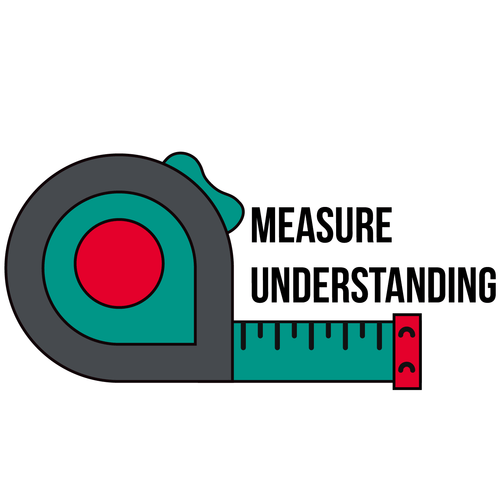
Exit Ticket: 3-2-1
- Instruction:
- Have participants write on their worksheet or share out loud the following question(s).
- What are three parts of the nutrition label you should limit?
- What are two parts of the nutrition label you want to get enough of?
- Name one food or drink you are excited or curious to check the nutrition label of after this lesson.
- Have participants write on their worksheet or share out loud the following question(s).
Special thank you to our partners at Atkins for supporting the content of this lesson:
Atkins Nutritionals, Inc. (Atkins) is a consumer lifestyle and packaged goods brand with a 50-year legacy of helping individuals reach their weight management goals by making better choices about the best foods to eat. With a well-balanced approach to nutrition emphasizing a wide array of vegetables, proteins, healthy fats and fiber-rich carbohydrates, Atkins is committed to educating and empowering people on living healthier lives with an increased awareness about controlling carbohydrates, leading to balanced blood sugar, sustained energy, and improved health markers in the long term.
Bibliography
- Gavin, ML. (2014). Figuring out food labels. Retrieved From: http://m.kidshealth.org/en/parents/food-labels.html
- Kirkpatrick, K. (2015). Eat these foods to boost your immune system. Retrieved From: health.clevelandclinic.org/2015/01/eat-these-foods-to-boost-your-immune-system/
- Merriam-Webster. (n.d.) Nutrition. Retrieved From: https://www.merriam-webster.com/dictionary/nutrition
- Tremblay, S. (n.d.). What role does sodium play biologically? Retrieved From: http://healthyeating.sfgate.com/role...ally-7971.html
- U.S. Food & Drug Administration. (2016). Food serving sizes get a reality check. Retrieved From: www.fda.gov/ForConsumers/ConsumerUpdates/ucm386203.htmhttps://www.fda.gov/ForConsumers/ConsumerUpdates/ucm386203.htm
- U.S. Food & Drug Administration. (2018). Changes to the Nutrition Facts Labels. Retrieved From: https://www.fda.gov/Food/GuidanceReg.../ucm385663.htm
- U.S. Department of Agriculture & U.S Department of Health and Human Services. (2015). Dietary Guidelines for Americans. Retrieved From: https://health.gov/dietaryguidelines...Guidelines.pdf
- U.S. Department of Agriculture. (2015). Why is it important to eat grains, especially whole grains? Retrieved From: www.choosemyplate.gov/grains-nutrients-health
- Zeratsky, K. (2016). What do the Daily Value numbers mean on food labels? Retrieved From: http://www.mayoclinic.org/healthy-lifestyle/nutrition-and-healthy-eating/expert-answers/food-and-nutrition/faq-20058436
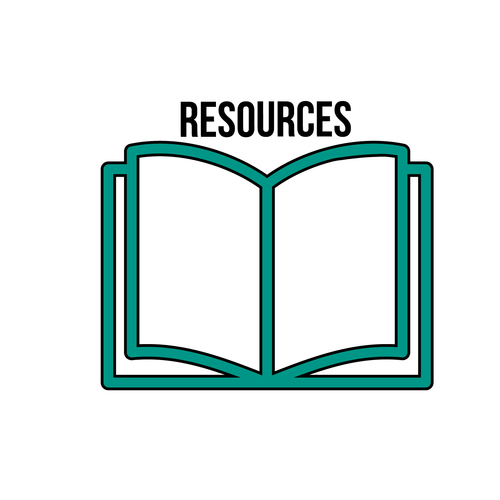
- TEDx Talks. (2016). Decoding Food Labels - Tony Farmer. Retrieved From: https://www.youtube.com/watch?v=1dRkK4KwRyY
- Food serving sizes get a reality check (FDA, 2018):

- Chart with estimated calorie needs per day by age, gender, and activity level (USDA & HHS, 2015):

This lesson was created in partnership with Albert Einstein College of Medicine Department of Epidemiology and Population Health with funding support by the National Institutes of Health NIDDK Grant R01DK097096

